| Home |
|
___ Mali |
|
 Great Mosque of Djenné in Mali. Djenné is an urban center in the inland Niger Delta region of central Mali, the mosque is large adobe building, considered by many architects to be one of the greatest achievements of the Sudanese-Sahelian architecture. Image: Göran Höglund |
|
|
Destination Mali, a virtual guide to the region of the former Mali Empire. Mali is a landlocked country in interior of Western Africa, large parts in the north reach deep into the center of the Sahara, more than half of the country lies in the extremely hot, dust-laden desert, while its central parts are in the Sahel zone, the transition zone between the desert and the savanna, the grassy plain in the south. Mali is bordered by Algeria in north, by Niger in east, by Burkina Faso and Cote d'Ivoire in south, by Guinea in south-west, and by Senegal and Mauritania in west. With an area of 1,241,238 km² the country is 3.5 times the size of Germany, or slightly less than twice the size of the U.S. state of Texas. Located in the central part of the country is its highest point, Mount Hombori Tondo, with 1,155 m. Mali's climate ranges from subtropical in south to arid, hot and dry in north. The majority of its population of 16.3 million live in the country's southern region. Capital and largest city is Bamako. Spoken languages are French and Bambara (Bamanankan), a Mande language. Mali is a predominant Islamic country, about 90% of its population are Muslims. | |
Republic of Mali | République de Mali |
Country Profile |
Background: The Sudanese Republic and Senegal became independent of France in 1960 as the Mali Federation. When Senegal withdrew after only a few months, the Sudanese Republic was renamed Mali. Rule by dictatorship was brought to a close in 1991 with a transitional government, and in 1992 when Mali's first democratic presidential election was held. Since his reelection in 1997, President KONARE has continued to push through political and economic reforms and to fight corruption. In 1999 he indicated he would not run for a third term. In keeping with Mali's two-term constitutional limit, KONARE stepped down in 2002 and was succeeded by Amadou TOURE, who was subsequently elected to a second term in 2007. The elections were widely judged to be free and fair. related countries: France |
Official Name: République de Mali int'l long form: Republic of Mali short form: Mali former: French Sudan and Sudanese Republic ISO Country Code: ml, MLI Actual Time: Tue-Apr-23 10:44 Local Time = UTC (0h; no UTC/GMT offset) Country Calling Code: +223 Capital City: Bamako (pop. 1 million) Other Cities: Segou (200 000), Sikasso (120 000), Mopti (90 000), Gao (65 000), Kayes (65 000), Timbuktu (38 000) Government: Type: Republic Independence: 22 September 1960 (from France). Geography: Location: Western Africa, southwest of Algeria. Area: 1,240,000 km² (474,764 sq. mi.) Terrain: Savannah and desert. Climate: Semitropical in the south; arid in the north. People: Nationality: Malian(s). Population: 16,3 million (2012) GNI per capita PPP: $ 1,084 (year) Ethnic groups: Manding, Mande (Bambara or Bamana, Malinke, Sarakole, Soninke) 50%, Fulani, Songhai, Voltaic, Tuareg and Maur. Religions: Islam 90%, indigenous beliefs 9%, Christian 1%. Languages: French (official) and Bambara (spoken by about 80% of the population). Literacy: 30-45%. (est.) Natural resources: Gold, phosphate, kaolin, salt, and limestone. Agriculture Products, (42% of GDP): millet, sorghum, corn, rice, livestock, sugar, cotton, Groundnuts (peanuts), and tobacco. Agriculture products: Cotton, millet, rice, corn, vegetables, peanuts; cattle, sheep, goats. Industries: Food processing; construction; phosphate and gold mining. Exports - commodities: cotton, gold, livestock Exports - partners: Switzerland 48.5%, China 9.4%, India 9.1%, Bangladesh 8%, Thailand 4.5%, Indonesia 4.4% (2015) Imports - commodities: petroleum, machinery and equipment, construction materials, foodstuffs, textiles Imports - partners: Cote dIvoire 9.9%, France 9.5%, Senegal 7.7%, China 7% (2015) Currency: CFA Franc BCEAO (XOF) |
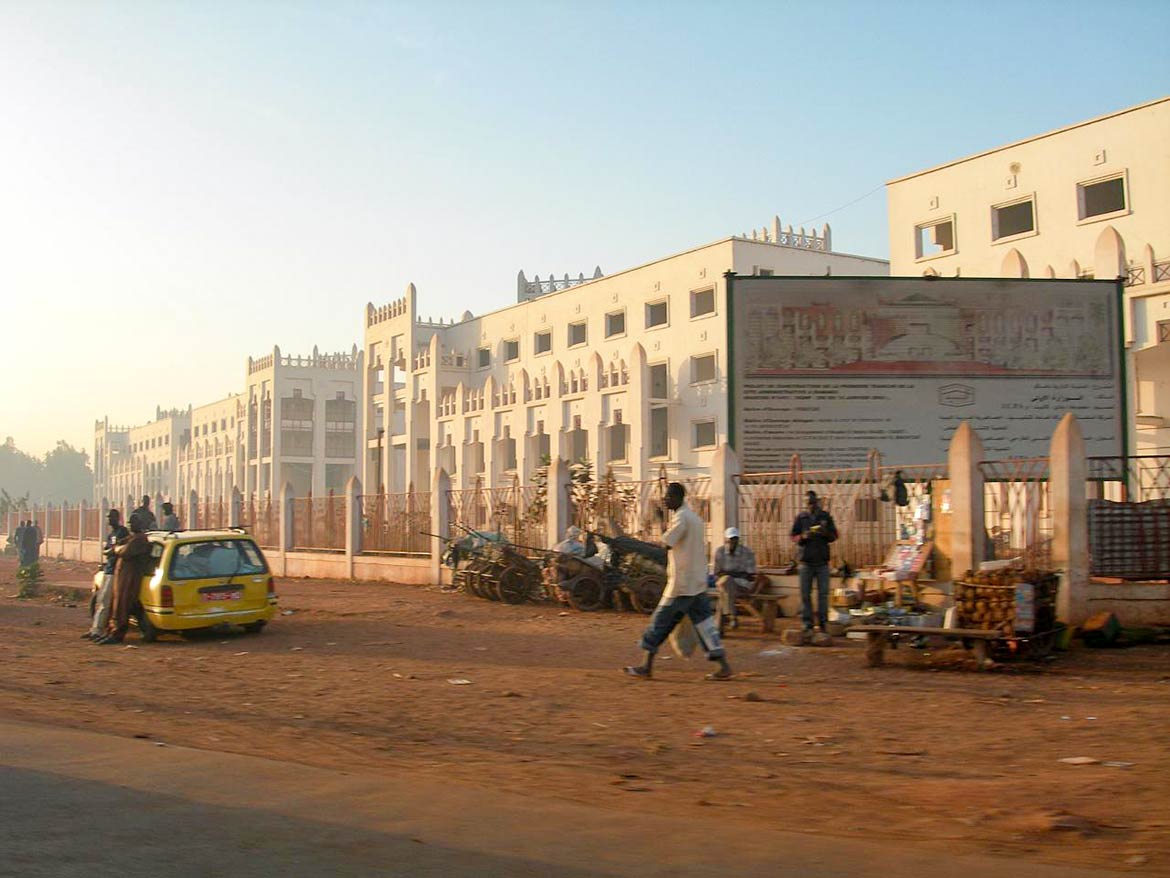 Administrative buildings in Bamako. Image: Radio Raheem Official Sites of MaliNote: External links will open in a new browser window.Many government websites seem to be down or unavailable, it might be in connection with the unclear situation in Bamako, where an army mutiny took place in March 2012. Rebel troops have appeared on Malian state TV to announce they have seized control of the country, hours after attacking the presidential palace. Présidence de la République du Mali Official site of the presidency of the Republic of Mali provides information about the President and the Republic. Ministère de la Culture du Mali The Ministry of Culture. Maliens de l'Extérieur Ministry of Foreign Affairs and International Cooperation Mali (in French). Diplomatic Missions Embassy of Mali Mali's Embassy in Washington with visa, country and travel information. Mali Embassies Abroad Address list of Mali's Diplomatic Missions Abroad. Mali visa applications Information on Visas for Mali. MapsPolitical and administrative Map of Mali. Searchable map and satellite view of Mali. Searchable map and satellite view of Mali's capital city. The 54 countries of Africa. A Relief Map of Africa. |
NewsAccording to BBC and other press organizations, Mali's broadcast and print media are among the freest in Africa. Print/Online Africa News Mali Mali Headlines by Africa News. L'Essor State-owned national daily published in Bamako provides national and international news. (in French) Info Matin Privately-owned daily. (in French) Maliactu.net Mali news. (in French) Maliweb.net News from and about Mali. Agence Malienne de presse et de publicité (AMAP) Radio/TV Office de la Radiodiffusion Television du Mali (ORTM) Mali's public television and radio, programmes are in French and local languages. (in French) |
Bookmark/share this page 
|
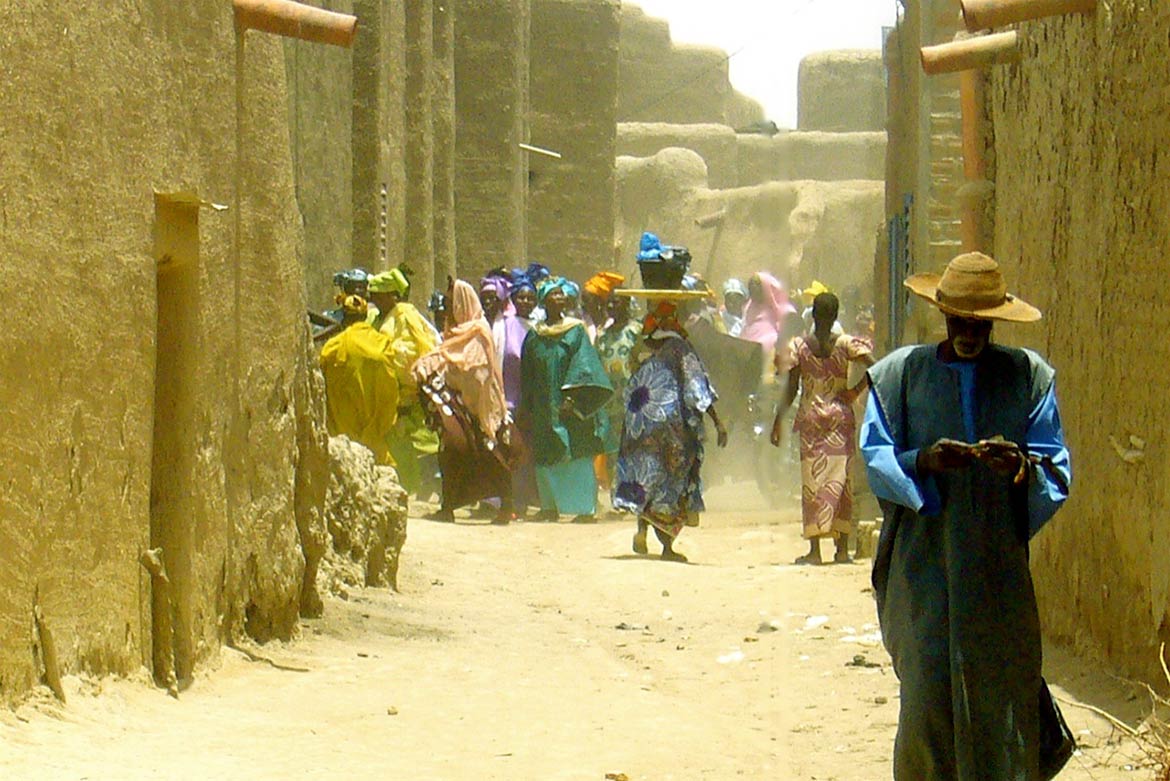 Streets of Djenné, a town in the Inland Niger Delta region of central Mali. Image: Alexandre Baron Arts & CultureMinistère de la Culture Official site of the Ministry of Culture provides information on Malian culture. Mali Gallery Album photos du Mali Mali images from a tour through Dogon country on a motorbike. Photos Bamako sur la Galerie de L'internaute Photo gallery related to Mali. Music of Mali Songs and History of the Mande Manding songs and traditions, traditional music of Mali. Festival on the Niger Music and dance festival at Segou. Griots of West Africa & Beyond Backgrond information on the tradition of Griots. Mamadou Diabate Malian kora musician, Mamadou Diabate is a member of the Mandinka West African jeli (musician caste) family. |
 Mopti Woman 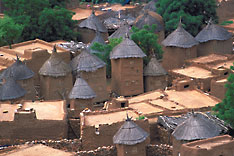 Dogon Village |
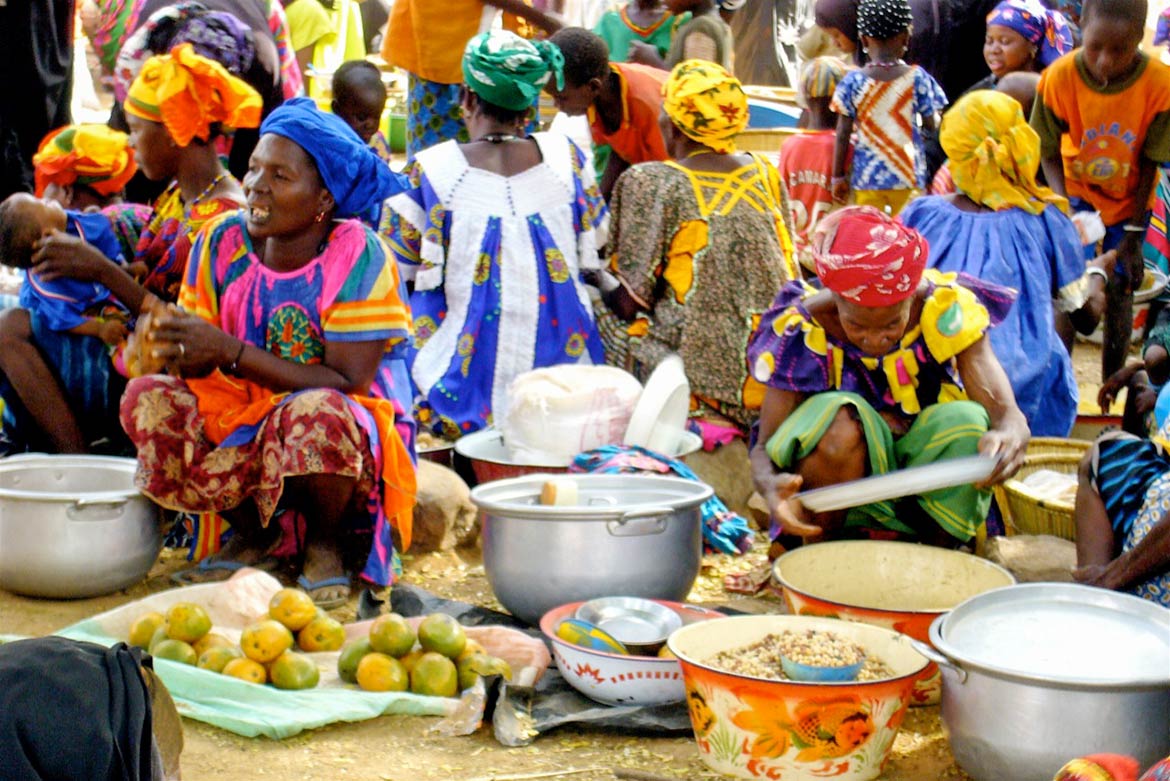 Market at Kani-Kombolé, a Dogon village near Mopti. Image: Alexandre Baron Business & EconomyMali depends on gold mining and agricultural exports for revenue. Economic activity is largely confined to the riverine area irrigated by the Niger River. About 10% of the population is nomadic and about 80% of the labor force is engaged in farming and fishing. Mali is among the 25 poorest countries in the world
|
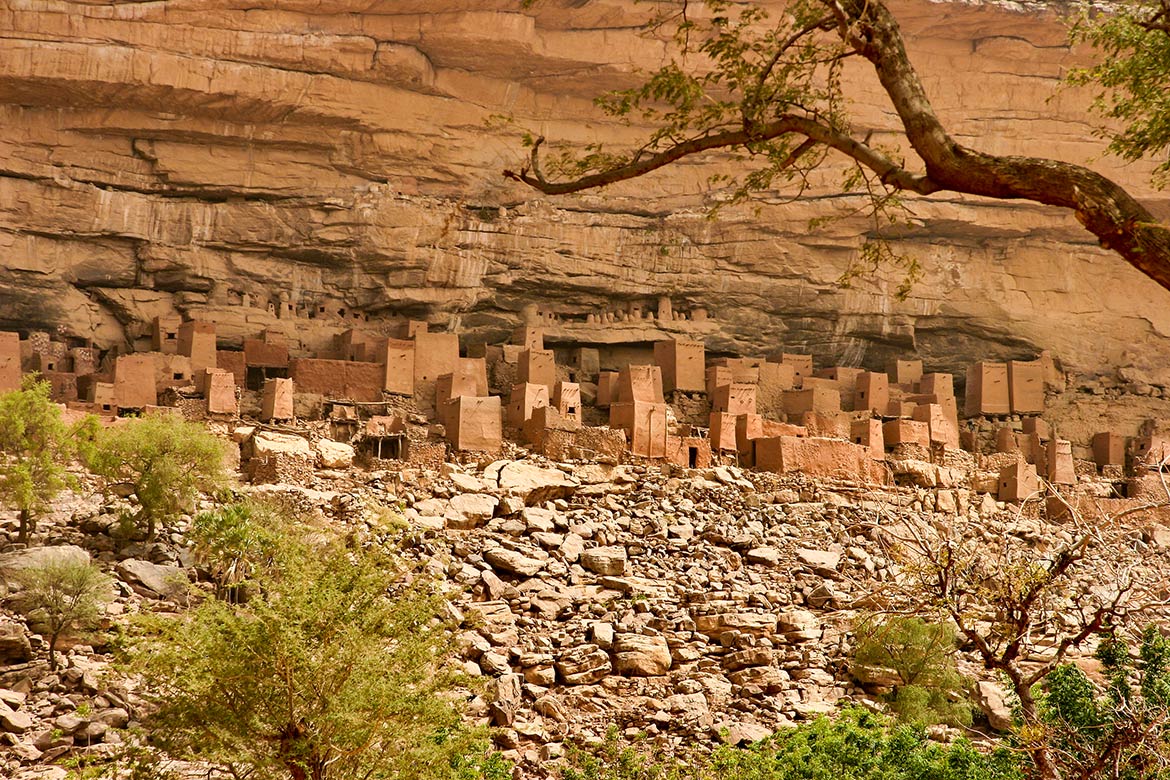 Cliff dwellings in the Bandiagara escarpment in the Sahel region of Mali. The Cliff of Bandiagara, also known as the Land of the Dogons, is a vast cultural landscape covering 400,000 ha and includes 289 villages scattered between the three natural regions, a sandstone plateau, the escarpment and the plains. Image: Ferdinand Reus Travel and Tour Consumer Information
Destination Mali: Travel and Tour GuidesTourist Office of Mali Tourism Mali page with information about the country. Afribone Mali Mali portal with country information. (in French) Au Coeur du Mali Mali portal (in French). Experience Mali Mali tourism information site with a photo gallery. Mali Journeys Beautiful private page about Mali. Kidal.info Site about the Kidal Sahara region in northwestern Mali. (in French) Sacred Sites of the Dogon, Mali About the Dogon people of Mali, West Africa. Dogon Dogonalbum Photogallery of the Dogon people. Dogon people Wikipedia entry about the Dogon people. World Heritage Sites of Mali  Cliff of Bandiagara (Land of the Dogons) Cliff of Bandiagara (Land of the Dogons) The Bandiagara escarpment is an outstanding landscape of cliffs and sandy plateaus. The communities at the site are essentially the Dogon people, who have a very close relationship with their environment expressed in their sacred rituals and traditions.  Old Towns of Djenné Old Towns of DjennéDjenné one of the oldest towns of sub-Saharan Africa was inhabited since 250 B.C., the town became a market center and an important link in the trans-Saharan gold trade. In the 15th and 16th centuries, it was one of the centers for the propagation of Islam. Its traditional houses, of which nearly 2,000 have survived, are built on hillocks as protection from the seasonal floods.  Timbuktu TimbuktuTimbuktu was an intellectual and spiritual capital and a center for the propagation of Islam throughout Africa in the 15th and 16th centuries. Its three great mosques, Djingareyber, Sankore and Sidi Yahia, recall Timbuktu's golden age. Although continuously restored, these monuments are today under threat from desertification. |
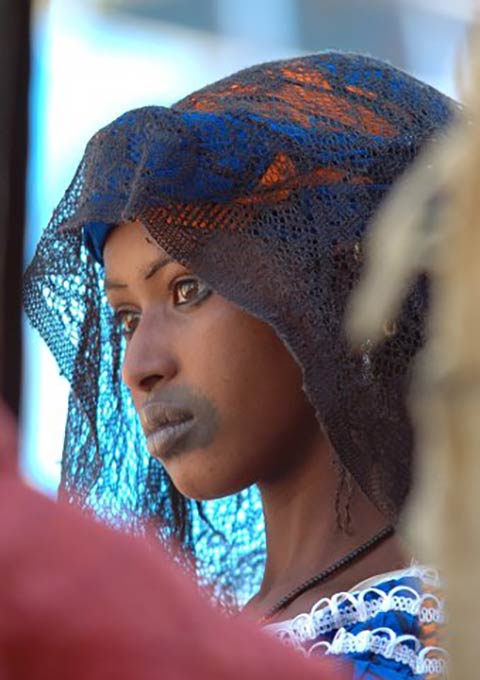 Lady from Northern Mali 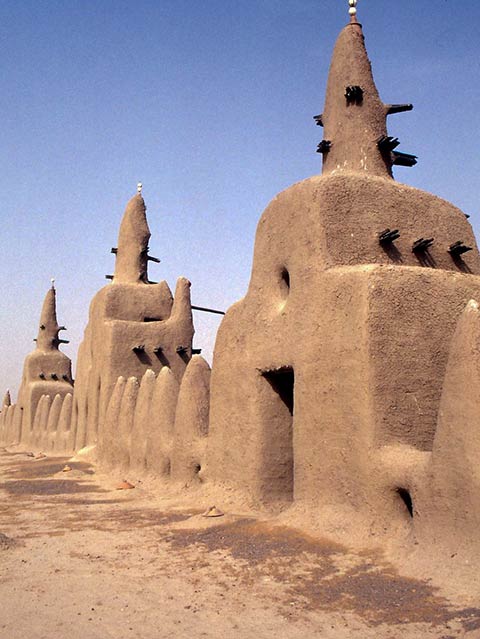 Roof of the Djenne Mosque Image: Albert Backer |
EducationLycée Français Liberté The school's homepage, Bamako (in French). Université de Bamako The University of Bamako is a public university in Mali's capital Bamako, it is also known as the University of Mali. |
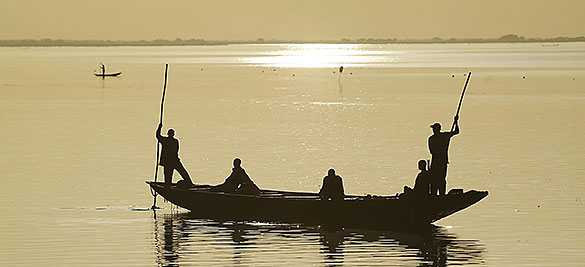 Fisher on Niger river Photo: Manfred Schweda Environment & NatureCinzana Agricultural Research station Dedicated to producing sustainable increases in crop production and productivity through improved seed breeding. Institut d'Economie Rurale du Mali Institute for the research of agricultural development and preservation of natural resources based in Bamako. Mount Hombori Project Long-term monitoring of the biodiversity of Mount Hombori and its region located south of Timbuktu. Comité Permanent Inter-Etats de Lutte contre la Sécheresse dans le Sahel (CILSS) Permanent Interstate Committee for Drought Control in the Sahel (in French). |
HistoryHistory of West Africa Wikipedia entry about history of West Africa, including Mali. (in English and French) Kingdoms of the Medieval Sudan Site provides a narrative historical overview of Mali, Songhay, Kanem-Bornu, and Hausaland before the modern era. Mali Interactive Project Information about the archaeological site of Jenné-jeno ("ancient Jenné") History of Mali Wikipedia articles about Mali's history. |
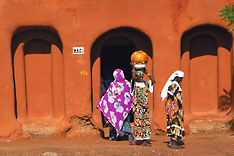 Street Scene at Segou |
Sources and additional Information on MaliAfrica South of the Sahara: Mali Background information on Mali collected by Karen Fung. Amnesty International: Mali BBC Country Profile: Mali FAO: Mali Foreign travel advice: Mali GlobalEDGE: Mali The Heritage Foundation: Mali Human Rights Watch: Mali OEC: Mali Reporters Without Borders: Mali Upenn - African Studies Center: Mali Wikipedia: Mali The World Factbook - Mali |
 |
Major Cities in West Africa Abidjan, Abuja, Accra, Bamako, Banjul, Bissau, Conakry, Cotonou, Dakar, Freetown, Lagos, Lomé, Monrovia, Niamey, Nouakchott, Ouagadougou, Porto-Novo, Praia, Sao Tome City, Yamoussoukro Other Countries in Western Africa Benin | Burkina Faso | Cape Verde | Côte d'Ivoire | Gambia | Ghana | Guinea | Guinea-Bissau | Liberia Mauritania | Niger | Nigeria | Senegal | Sierra Leone | Togo |
One World - Nations Online .:. let's care for this planet Promote that every nation assumes responsibility for our world. Nations Online Project is made to improve cross-cultural understanding and global awareness. More signal - less NOISE |
| Site Map
| Information Sources | Disclaimer | Copyright © 1998-2023 :: nationsonline.org |